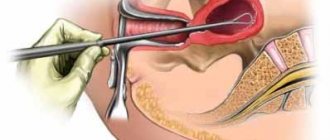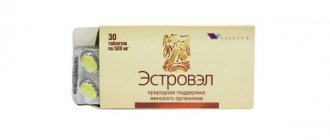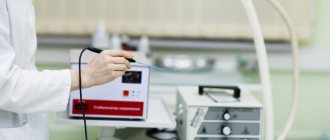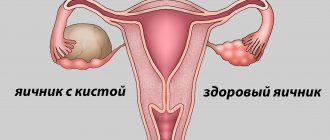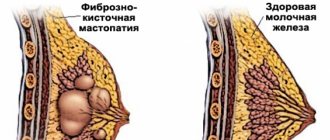Curettage is a surgical process in which the uterine cavity is cleaned. It can also be carried out for therapeutic and diagnostic purposes. In most cases, the indications for such a procedure are the presence of the following factors:
- presence of a polyp;
- bleeding;
- hyperplasia and abortion;
- ectopic pregnancy;
- miscarriages;
- diseases of the cervix and its body;
- frozen pregnancy and others.
In all these cases, curettage of the uterus is carried out differently. In former times, this procedure was performed without anesthesia at all. The only thing they could do was local anesthesia with lidocaine (injection of the cervix).
Today, civilization has gone far ahead, so in modern gynecology the following three types of anesthesia are used: local anesthesia, sedation and intravenous anesthesia for curettage.
Local anesthesia
When using this type of anesthesia, pain is not completely eliminated. This is explained by the fact that during the process of curettage of the uterine cavity using a curette, there is severe pain in the uterus itself. That is, local anesthesia can greatly dull pain, but it does not have the function of completely blocking them.
The mechanism of action of such anesthesia is that a local anesthetic is injected into the tissues located near the cervix. Often, with the help of this type of anesthesia, conization is performed, after which the patient does not need a long stay in the hospital.
However, today this method of anesthesia is rarely used during curettage, since there is a risk of the drug entering the blood vessels located around the cervix. This is fraught with loss of consciousness, seizures and disruption of the functionality of the cardiovascular system.
How you feel after cleaning
Not everyone is able to quickly get into the usual rhythm of life, resume sports and exercise. Recovery time largely depends on the individual characteristics of the body.
After curettage, moderate abdominal pain, mild anesthesia-related dizziness, and moderate bleeding are usually noted.
Restoration of the uterus after curettage, both therapeutic and diagnostic, lasts one menstrual cycle, the whole body - from 2 to 6 months.
General health after curettage:
- Body temperature up to 37.2-37.3 is considered normal in the first 2-3 days.
- Moderate abdominal pain lasts up to 7 days.
- Slight dizziness is acceptable.
Discharge after cleaning procedure:
- The first few days there is discharge from the genital tract in the form of fresh blood, as during menstruation.
- A week after the curettage, the discharge takes on a sanguineous character: it becomes mucous and has a brown color due to the admixture of altered blood.
- The restoration ends with yellowish discharge, which gradually takes on a classic appearance: scanty, mucous discharge, which, when dried, takes on a yellowish tint.
- The normal duration of discharge during the recovery period is 10-12 days.
The next menstruation after curettage should begin 25-45 days later.
Normally, the first day of menstruation should occur after a period of time equal to the length of the cycle before cleaning (provided that it is regular).
What you should pay attention to and when you need to seek help from medical professionals if a woman has undergone curettage:
- Long-term (more than 20 days) bloody discharge.
- Scanty or heavy menstruation, spotting not associated with menstruation in the long term after curettage. These symptoms may indicate the development of cervical endometriosis or hormonal imbalance.
- Unpleasant smell of discharge.
- The discharge looks like “meat slop”.
- Increased discharge with light physical activity.
- Pain in the lower abdomen that lasts more than a week after curettage.
- An abrupt cessation of discharge after uterine curettage, which may indicate the accumulation of clots in the cavity of the organ (hematometer).
- Heavy bleeding.
- Increased body temperature.
- Loss of consciousness.
The above symptoms may indicate the development of endometritis.
The severity of some purulent-inflammatory diseases of the internal genital organs after curettage may not correspond to the clinical picture and laboratory parameters.
That is why it is extremely important to be under the supervision of a doctor if there are even minimal signs of infectious complications.
Sedation
Sedation is currently a fairly common type of anesthesia during curettage. When using it, the patient is given an injection of a narcotic analgesic that functions as an anesthetic (promedol) or a tranquilizer (diazepam) is injected into a vein.
Sedation is performed mainly in a day hospital and in most cases is done in order to terminate the pregnancy process, or when a tissue biopsy is necessary. With this type of anesthesia, the presence of a specialist anesthesiologist is not necessary. Just like local anesthesia during uterine curettage, it can be performed by a gynecologist.
As a rule, this procedure uses minimal dosages of drugs, so there is little clinical effect. If the drugs are used in large doses, the effect will be stronger, but the functioning of the body’s respiratory system may be disrupted, which only an anesthesiologist can normalize.
Throughout the entire process, the patient experiences a half-asleep state, and the pain does not completely disappear. The woman also hears surrounding voices and can observe the events taking place. This is also due to the fact that the administered drug has a small dosage.
Anesthesia for curettage of the uterus - anesthesia for cleaning the uterus
The choice of anesthesia for hysteroscopy of the uterus depends on what kind of surgical intervention is planned to be performed. Most often, one of three types of pain relief is used:
- local - injections of painkillers into the cervix, it is used only in the case of diagnostic hysteroscopy;
- general – intravenous administration of the drug (medicated sleep);
- regional – epidural anesthesia.
When a flexible hysteroscope is used to diagnose the uterus, the procedure can be performed without anesthesia.
Such a procedure will be very unpleasant, but it only takes 10-15 minutes, so if there are contraindications or allergic reactions to anesthesia, doctors sometimes suggest being patient and carrying out the procedure without pain relief.
What type of anesthesia will be better? The doctor decides based on the specifics of the operation and the individual physiological characteristics of the patient’s body.
Stages of general anesthesia
There are four of them: analgesia, motor stimulation, surgical anesthesia and agonal stage. Analgesia, as mentioned earlier, is accompanied by the shutdown of pain sensitivity centers. The patient is in a state of “stunning”, while breathing is deep, the pulse quickens, but reflexes are still preserved.
The stage of motor excitation is characterized by the following phenomena:
- Increased skeletal muscle tone;
- Uncoordinated movements in space;
- Erratic contractions of the arms and legs;
- Trying to get up from the operating table;
- Pupil dilation;
- Frequent swallowing;
- Voluntary urination;
- Reflex cessation of breathing;
- Vomiting.
The stage of surgical anesthesia is divided into four levels. These are superficial, light, complete and ultra-deep anesthesia. With light anesthesia it is already possible to perform superficial operations.
The professionalism of medical personnel is the key to the success of the operation
General anesthesia is one of the most difficult types of anesthesia and, if we are discussing which anesthesia is better to choose, preference should clearly not be given to it, especially for pregnant women. Complications of general anesthesia, manifested in loss of control over anesthesia by medical personnel, can pose a threat to the health and life of the person on the operating table.
There are three main components of general anesthesia:
- Medication sleep. During which the patient is forced to “calm down”;
- Analgesia. The person does not feel pain. The body’s automatic (vegetative) reactions to surgical trauma are suppressed. Such reactions may be, for example, tachycardia (increased heart rate), increased blood pressure;
- Muscle relaxation. It involves muscle relaxation, resulting in the provision of normal conditions for surgical interventions.
As you can see, the primary task set before the anesthesiologist is to eliminate pain. If it doesn’t exist, it means that physiological protective mechanisms will not turn on.
Contraindications to general anesthesia
Contraindications to such anesthesia may be the following:
- Acute alcohol intoxication;
- Taking drugs;
- Severe form of bronchial asthma;
- Neurological and mental disorders;
- The presence of hormone-dependent pathologies, etc.
Contraindications to anesthesia in children:
- Severe rickets;
- Purulent rashes on the skin;
- Infectious diseases;
- Gastrointestinal tract disorders.
The two-week period after vaccination can also be considered a contraindication for general anesthesia in children.
It should be noted that when it comes to saving the patient’s life, the question of contraindications to this type of anesthesia does not arise.
When discussing which anesthesia is best to choose so that fewer complications arise for the human body, general anesthesia, as you can see, should be last on the list. The development of medicine and pharmacology today has made it possible to use more gentle methods of pain relief, in which the patient remains conscious, and therefore adaptation after anesthesia will be much easier.
The most common consequences of general anesthesia
Recovery from anesthesia is an equally important stage, characterized by the restoration of reflexes and a return to normal functioning of the body. Anesthesiologists continue to monitor the patient after the operation, as various types of consequences of anesthesia may occur.
There are the following consequences associated with dysfunction of the cardiovascular system:
- Reduced pressure;
- Pulmonary edema;
- Increased pressure;
- Pulmonary embolism;
- Disturbance of normal heart rhythm.
- Spasm of the larynx and closure of the ligaments;
- Carbon dioxide accumulation;
- Increased sputum production;
- Bronchial spasm.
Other consequences of general anesthesia:
- Allergic reactions;
- Hiccups;
- Acute adrenal insufficiency.
The most common effects, especially in children and pregnant women, are vomiting and nausea. A serious consequence of anesthesia for patients with epilepsy can be the development of convulsive syndrome.
Source: https://womanginekol.ru/obshchiy-narkoz-ginekologii-ot/
Intravenous (general) anesthesia
General (intravenous) anesthesia for curettage is performed only by an anesthesiologist in the operating room. Before this procedure, the anesthesiologist must find out from the woman whether she has previously had head injuries, what surgical interventions using general anesthesia she has previously undergone, what her body weight, height, and so on. A specialist needs this information in order to choose the right medications and calculate their dosage.
When using general anesthesia, the patient does not experience any sensations. Cleaning usually lasts within one hour, the minimum time is twenty minutes. After the operation is completed, the woman wakes up almost immediately and quickly regains consciousness. Such short-term pain relief rarely causes any complications in the future, and there are no negative consequences for the body.
Such planned operations are usually scheduled for the morning. An important point is that the patient should not take food or liquid in the evening.
General anesthesia today is considered the most common type of anesthesia for curettage. This is due to the following reasons:
- short duration of the procedure;
- the use of this method of pain relief during operations aimed at treating diseases such as hyperplasia (provokes the development of cancer, which can be stopped with curettage) and the endometrium (in some cases, for more effective treatment of such a disease, cleansing is prescribed along with antibiotics);
- impossibility of getting leftover food from the stomach into the lungs;
- maintaining the woman’s spontaneous breathing (the patient breathes independently with the help of an oxygen mask);
- presence of sound sleep;
- no pain.
How dangerous is the period after the procedure?
The uterine cavity after cleaning is an extensive wound surface. The lion's share of recommendations after curettage will be aimed at preventing microorganisms from entering the cavity of the operated organ. Gynecologists are aimed at preventing the development of inflammation of the reproductive organs and its chronicity.
Experts identify two groups of risk factors for the development of infectious complications after uterine curettage:
- Main group. This category includes women with a history of endometritis, chronic recurrent chlamydia, urea and mycoplasmosis, candidiasis, human papillomavirus infection, and persistent vaginal dysbiosis. In such patients, the likelihood of developing purulent-inflammatory diseases in the gynecological area during curettage is most likely. Patients are subject to the closest attention from doctors. This also includes emergency cases of curettage.
- Additional group. Patients who had uterine cleansing due to bleeding (endometrial hyperplasia), miscarriage, curettage of placenta or ovum remnants have a lower risk of infectious complications compared to the main group.
Women who have undergone diagnostic curettage have the lowest risk of developing infectious complications. Typically, this type of study is carried out in cases of infertility of unknown origin, in preparation for IVF, suspected polyps and subserous fibroids, and menstrual irregularities.
Factors that indirectly influence the period after curettage:
- Obesity.
- Diabetes.
- Anemia.
- Hypothyroidism.
The above diseases have an indirect effect on the course of the recovery period of curettage, but their presence significantly reduces physical strength, the body's resistance to infections and slows down the healing processes of the wound surface in the uterus after curettage.
The most common infectious complication after curettage is endometritis, an inflammation of the inner layer of the uterus.
The causative factor of the disease is the opportunistic vaginal flora (staphylococci, streptococci, E. coli), as well as representatives of the pathogenic flora, if the patient before the operation had untreated sexually transmitted infections - chlamydia, ureaplasmosis, mycoplasmosis, gardnerellosis and others. That is why, in the period after therapeutic curettage, gynecologists recommend taking antibacterial drugs without fail, regardless of the infectious history. After diagnostic cleaning, you can limit yourself to taking sulfonamides.
According to statistics, the incidence of endometritis after uterine cleansing is 20%.
Purulent-inflammatory diseases of the genital area do not always appear after curettage due to non-compliance with the doctor’s recommendations. Nosocomial infection is still relevant today. A woman should choose modern clinics with rich obstetric and gynecological experience.
Poor quality cleaning can result from the penetration of endometrial cells into the cervical tissue, which leads to endometriosis.
Medicines for curettage
Currently, curettage or removal of cysts, which are performed under general anesthesia, is most often accompanied by the use of anesthetic drugs such as calypsol (ketamine), propofol and sodium thiopental. Propofol is considered the best of this series. This drug ensures smooth falling asleep, comfortable sleep and painless awakening from anesthesia. Widely used in diagnostic examination of the body. Ketamine, according to many experts, is far from the best drug in the process of curettage and treatment of the cervix. It can provoke hallucinations of a threatening nature and is characterized by an unpleasant recovery from anesthesia.
